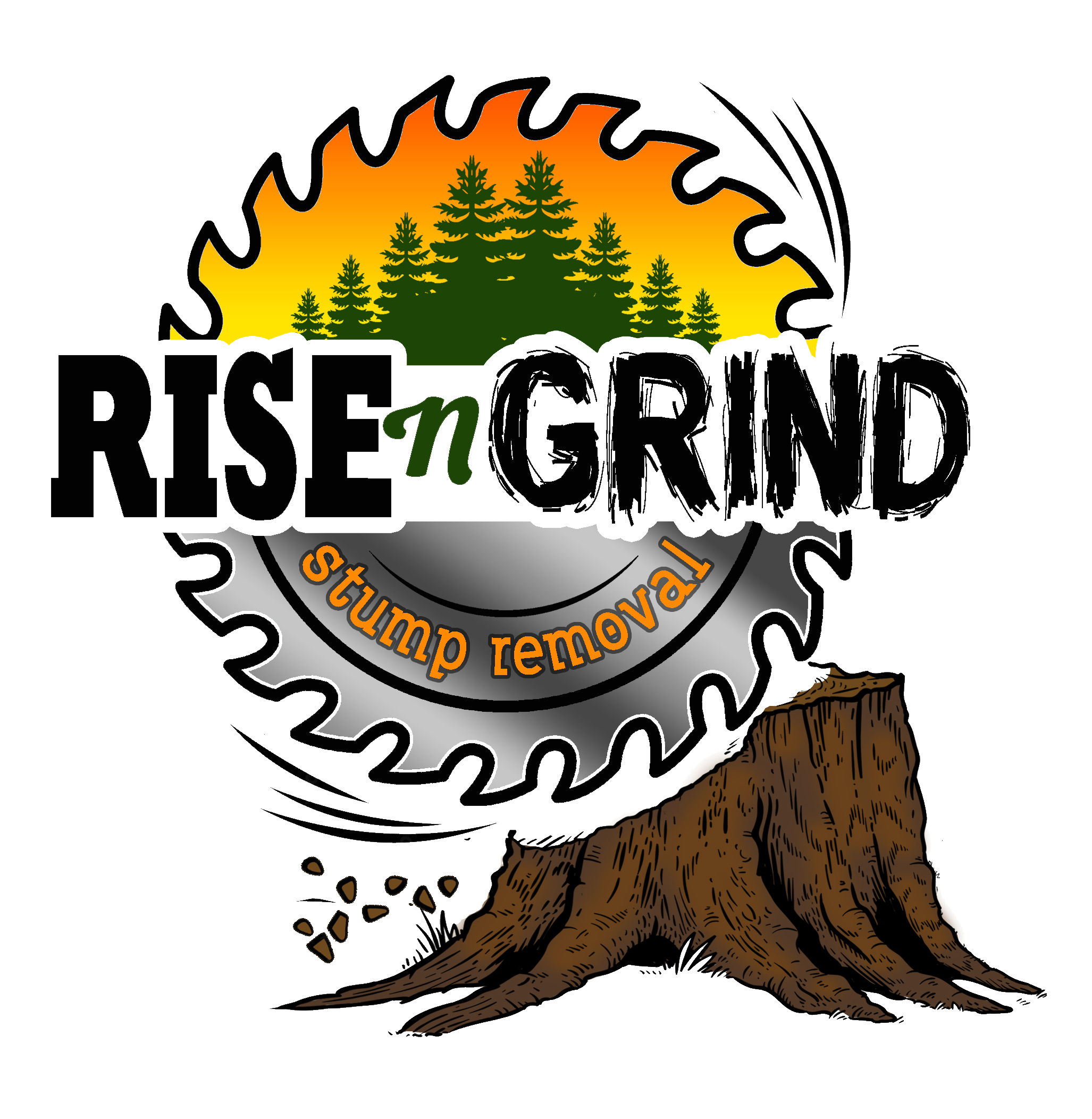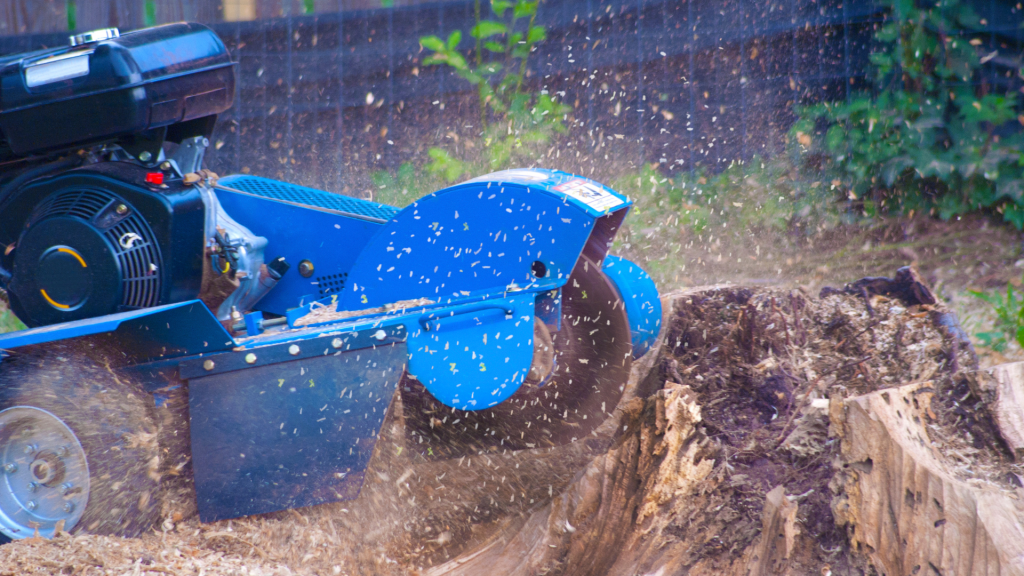The Basics of Stump Grinding
When a tree falls or is cut down from your property, it’s often just the beginning of the removal process. What is left behind is the tree’s stump, and a constant reminder of what once was. Stump grinding is a common and effective solution for dealing with these remnants, but there’s much more to it than meets the eye. In this comprehensive guide, we’ll cover what you should know about the stump grinding process, from what it entails to the benefits it offers.
What Is Stump Grinding?
Stump grinding is the process of using specialized machinery to reduce a tree stump to small wood chips and mulch. Unlike stump removal, which involves extracting the entire stump and root system from the ground, stump grinding pulverizes the stump until it is below the ground’s surface, effectively eliminating the visible remnants. The result is a flat, safe, and aesthetically pleasing surface where the stump once stood. You can even lay sod over the bare surface to match your surrounding landscape.
How Does Stump Grinding Work?
Stump grinding may seem like a straightforward process, but it involves specialized equipment and skilled professionals to ensure a safe and effective outcome. The key tool in stump grinding is the stump grinder, a powerful machine designed explicitly for this purpose. Stump grinders come in various sizes and configurations, from small, walk-behind models to large, self-propelled units, depending on the scale of the job.
The grinding process begins with positioning the stump grinder over the target stump. The machine is equipped with a rotating cutting wheel or wheel teeth, often made of heavy-duty steel, that rapidly shreds the stump and its roots into small pieces. The grinder operator carefully guides the machine, ensuring that the entire stump is ground down to the desired depth. The depth of grinding can vary based on your specific needs, whether you plan to replant, build, or simply create a level surface.
As the stump is ground, the resulting wood chips and mulch are produced and scattered around the area. These wood chips can be collected for later use as organic mulch for your garden or landscaping projects. Once the grinding is complete, the site is cleaned up, and any remaining wood chips are spread evenly, creating a level and unobtrusive surface where the stump once stood. This process not only eliminates the visible portion of the stump but also prevents regrowth and makes the area safe and ready for your landscaping endeavors.
The Benefits of Stump Grinding
-
Stump Grinding Produces Aesthetically Pleasing Results
One of the most apparent benefits of stump grinding is the immediate improvement in your landscape’s appearance. Unsightly stumps are transformed into level, unobtrusive surfaces, allowing you to reclaim your yard’s beauty and maximize its potential.
-
Stump Grinding Enhances Safety
Stump grinding eliminates tripping hazards that stumps can pose, especially in high-traffic areas. Removing these obstacles enhances safety for pedestrians and prevents accidents.
-
Realize Better Use Of Your Yard With Stump Grinding
Stump grinding frees up valuable space in your yard, making it easier to use for various purposes. Whether you want to plant a new tree, create a garden bed, or install a patio, the absence of a stump provides more room for your landscaping ideas.
-
Regrowth Is Prevented After Stump Grinding
Leaving a tree stump in the ground can lead to regrowth from the remaining roots. Stump grinding eliminates this possibility by grinding the stump down to a level where it cannot support new growth.
-
Stump Grinding Is Eco-Friendly
The wood chips and mulch produced during the grinding process can be repurposed as organic mulch for your garden or landscaping, reducing waste and benefiting your plants.
When Should You Consider Stump Grinding?
-
Stump Grinding Should Be Performed After Tree Removal
Stump grinding is typically performed after a tree has been removed. It’s an essential step in the tree removal process, ensuring that the remnants of the tree are properly addressed.
-
Make Your Property Safer With Stump Grinding
If you have stumps in areas frequented by family members, guests, or pets, it’s crucial to consider stump grinding for safety reasons. Removing tripping hazards should be a priority.
-
Utilize Stump Grinding Before Landscaping or Construction Projects
If you plan to make changes to your landscape or build structures in your yard, stump grinding should be done before these projects begin. It provides a clear, level surface for your plans.
-
Stump Grinding Discourages Pest Infestations
Rotting stumps can attract pests like termites and wood-boring insects, which can then spread to nearby trees or even your home. Stump grinding eliminates this attraction.
The Stump Grinding Process
-
The First Step In Stump Grinding Is Assessing The Stump and Surrounding Area
Before starting the stump grinding process, an arborist or tree service professional assesses the stump’s size, location, and condition. This assessment helps determine the best approach and equipment required for the job.
-
Actual Stump Grinding Takes After The Assessment
The chosen stump grinder is carefully positioned over the stump, and the grinding process begins. The stump is ground down systematically until it’s below the surface and level with the surrounding ground.
-
After Stump Grinding Consider Debris Removal
After grinding, the resulting wood chips and mulch are typically left on-site, unless you opt for complete debris removal. Some homeowners choose to use the wood chips as mulch for their gardens or landscaping projects.
-
Always Cleanup After Stump Grinding
After the stump has been ground below the ground surface, the area is cleaned up, and the ground is leveled to create a seamless finish. Any remaining wood chips are spread evenly, and the site is prepared for your landscaping plans.
DIY vs. Professional Stump Grinding
While some homeowners may consider tackling stump grinding themselves to save money, it’s essential to weigh the pros and cons. DIY stump grinding requires renting equipment, which can cost around $100 to $200 per day. However, inexperienced operators may struggle with the machinery, potentially causing damage and safety hazards. Professional stump grinding not only ensures a quicker and safer process but also eliminates the hassle of equipment rental and debris disposal.
Stump Grinding Costs
The cost of stump grinding can vary depending on several factors, including the stump’s size, accessibility, and location. Small stumps (up to 12 inches in diameter) can cost between $75 and $150 to grind, while larger stumps (over 24 inches in diameter) may range from $350 to $600 or more per stump. Additional costs may include debris removal, deeper grinding for replanting, and regional pricing variations.
Stump grinding is a highly effective solution for dealing with tree stumps in your yard. Beyond its aesthetic benefits, stump grinding enhances safety, optimizes space, and prevents regrowth. Whether you’ve recently removed a tree or have existing stumps in your yard, considering professional stump grinding can transform your landscape, creating a safer, more attractive, and functional outdoor space for you to enjoy. Contact Rise N Ground Stump Removal today for a free estimate. We’d be happy to come out and asses your needs and provide our expert opinion on the best option to effectively meet your goals.


